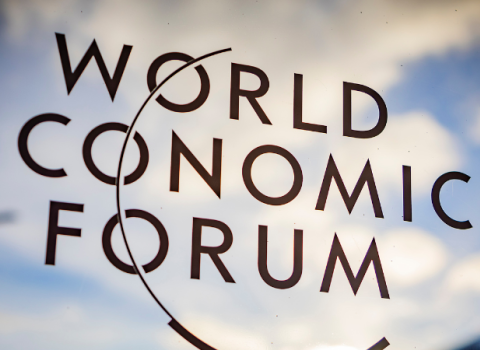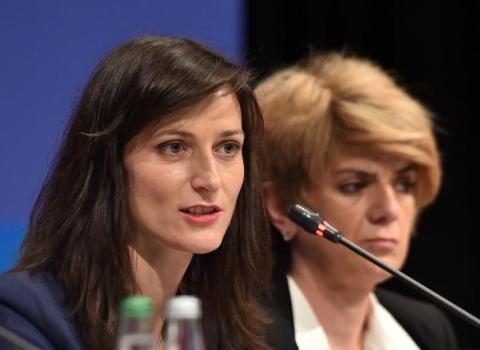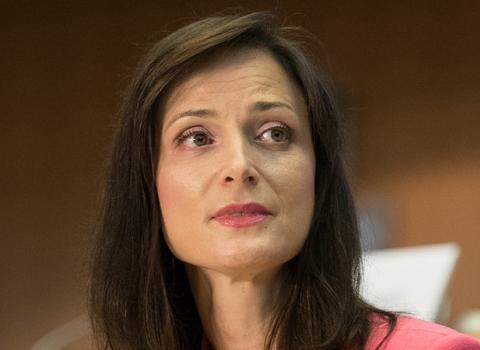Loans and grants for SMEs, regions, health systems and strategic supply chains under consideration for coronavirus recovery plan

Ursula von der Leyen says EU budget will be "mothership" of post-coronavirus recovery. Photo: European Commission
Brussels is preparing a post-Corona budget plan that includes extra funding for regional development, health care and small companies, heavy borrowing, and “reinforced” spending on research.
The European Commission’s revamp of its upcoming seven-year budget, called the multiannual financial framework, proposes to borrow hundreds of billions of euros, so as to avoid going to EU governments for extra financial contributions. The plan would also strengthen liquidity guarantees and reallocate funds as part of a recovery plan targeting the devastating economic toll of the COVID-19 pandemic.
Proposals under investigation include an array of new funds to help struggling companies and bolster European supply chains and health systems, according to a draft outline seen by Science|Business.
“Key policies that power our growth and capacity to integrate green and digital technologies will be strengthened,” the undated Commission document says, on the back of up to €320 billion of borrowing on financial markets.
Research and innovation funding via the upcoming Horizon Europe programme will be “reinforced”, suggesting the Commission will not seek to divert money from this source into the recovery fund. The document, a short summary of the budget plans, did not elaborate.
According to the EU’s original seven-year budget proposal, published in 2018, Horizon Europe was earmarked to receive €94.1 billion between 2021 and 2027, a rise from €77 billion in the current seven-year programme ending December 2020. The European Parliament is calling for the new research budget to rise to €120 billion, whereas the latest EU budget negotiations this winter placed the total at under €87 billion.
After the most recent EU summit of leaders, Commission President Ursula von der Leyen pledged to turn the EU budget into the “mothership” of the European recovery, and vowed to unleash a recovery fund of at least €1 trillion. Details of the mooted fund have been tightly concealed, with the president not expected to present her proposal until May 6.
But the Commission proposal will be just the start of the budget negotiations, to last well into this Autumn. National leaders are fiercely divided over how to finance an EU recovery fund.
Since the crisis hit Europe, northern countries have resisted calls to transfer large sums to stricken states such as Italy and Spain, where coronavirus has hit hardest. Proposals around large-scale mutual debt issuance meanwhile have been rebuffed by countries including the Netherlands, a leader among the so-called "frugal" countries that are net budget contributors.
These states have also balked at paying the higher national contributions that will be required at a time when all EU economies are now shrinking and many are headed for deep recessions.
This leaves the Commission seeking another course, which is to raise large debt on the capital markets to bankroll recovery – an unusual measure for the EU executive. In the past, it has received almost all of its funding from levies on the member-states’ treasuries, based on a percentage of each country’s gross national product.
At least half of the debt-financed recovery fund will be delivered via loans to struggling member states, the document says – meaning, in effect, that the Commission is borrowing to indirectly help fund the member states. “The rest will remain in the budget to be repaid by member states after 2027 over a long time horizon or paid through future additional own resources.”
Funds for companies and regions
According to the text, Berlaymont officials are investigating a €300 billion “temporary and targeted recovery fund” for member states. “The objective is to restore growth and employment as fast as possible,” the document says.
In addition, the Commission is considering re-allocating and “re-purposing” €50 billion of cohesion funds in 2021 and 2022, “aimed at restoring labour markets, health care systems and SMEs. To have impact when it matters most, the budget is heavily frontloaded,” the budget outline states.
Cohesion funding, which aims to reduce economic and social disparities across the bloc, is one of the biggest slices of the budget, slated to be worth more than €300 billion in the 2021-2027 cycle. This money is the main source of public investment for many of the continent’s poorer regions in the south and east. Since the COVID-19 crisis began, eastern and southern EU officials have been demanding more cohesion money to rebuild their local economies.
The Commission is also considering two new Europe-wide funds to help cash-strapped companies.
The first fund would help “sound companies to rebuild their capital quickly” while the second pot would invest in “building strategic autonomy in vital supply chains”.
The preliminary estimate is that both funds would “trigger” private-sector investment of €200 billion each.
Also proposed in the document is for an existing scheme, the InvestEU programme, which uses EU funds to guarantee private investment, to get a rebrand as “RecoverEU” and its budget doubled.
The InvestEU programme follows on from the Juncker Plan, named after former president Jean-Claude Juncker, which offered a small amount of funding or guarantees to entice private investors to back riskier projects that might otherwise not have got funding.
New healthcare and crisis response programmes to “ensure Europe will be better prepared in the future to deal with major health and other crises” are also mentioned in the budget outline.
EU leaders held a videoconference last Thursday to try hammer out the parameters of the revamped budget, with little progress reported.
With the current EU budget plan set to run out on December 31, the Commission is hoping to gain fast approval for its spending plans, which in ordinary times accounts for about 1 per cent of the bloc’s gross national income.





 A unique international forum for public research organisations and companies to connect their external engagement with strategic interests around their R&D system.
A unique international forum for public research organisations and companies to connect their external engagement with strategic interests around their R&D system.